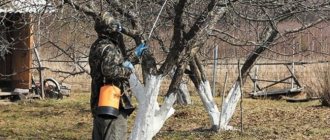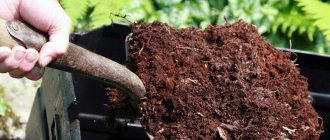At the end of the agricultural season, summer residents usually have free time for work for which they often lack it in the spring - for redevelopment, moving flower beds, dividing and replanting plants that have grown excessively in the garden. Many annual, biennial and perennial flowers are planted in the fall. There are several reasons for this: natural scarification and stratification necessary for pecking slow-germinating seeds, hardening of the seed, earlier and more luxuriant flowering in the summer.
If you plan to plant perennial flowers in the fall, before winter, it is important that they have time to take root before the onset of persistent frosts
Advantages of winter sowing of flowers
- Save time. Flowers require a lot of care. Therefore, having planted them before winter, you will not need to grow seedlings and will have free space on the windowsill for other heat-loving plants.
- Hardening off seedlings. Plants sown late in autumn and winter are more resistant to temperature changes, diseases and pests.
- Early flowering. Winter flowers bloom 2 weeks earlier than those planted in early spring through seedlings.
- Seed stratification. There are flowers that must undergo stratification before starting to grow. That is, when sowing in spring, manufacturers recommend keeping the seeds in the refrigerator. And in winter, in the ground, the seeds will go through this process under natural conditions.
- In the fall, you can sow seeds that are reaching the end of their shelf life.
If the seeds do not germinate well after winter sowing, you will have the opportunity to re-sow in the spring
Preparatory work
When determining planting time, it is important to take into account the climate in a particular area. A sudden return of warm weather (popularly called “Indian summer”) can cause unwanted premature seed germination and bulb awakening. Some species are allowed and even recommended to be sown after the first snow, and sometimes in the middle of winter, in December - January. This is done with seeds, which require preliminary freezing to awaken and destroy the shell.
The choice of landing site is of great importance . Although flower crops prefer mostly open sun or partial shade, it should not be in heavily windy areas that are exposed to snow in winter. In shady places where snow cover lingers for a long time, flower beds should also not be placed. You cannot plan to plant a flower garden in lowlands that are flooded in the spring, otherwise the seeds will be washed away by melt water or they will rot.
The soil is dug up in advance, cleared of weeds, disinfected, and fertilizers are applied.
The sowing depth directly depends on the size of the seeds. If they are very small, they are not covered with more than 1 cm of soil. Small seeding material is often scattered directly over the surface, trying to distribute it evenly. The soil should not be too loose so that the seeds are not dragged by sediment to a depth where they suffocate. In this case, the soil is compacted a little by slapping it with your hands or trampling it with your foot. Be sure to install signs with the names of crops and the time of work performed. There is no need to water sown seeds, planted rhizomes and bulbs. When selecting plants for flowerbed arrangements, it is important to remember to follow the rules of crop rotation. For example, bulbous vegetables should not be planted after related vegetables from the same family, as well as those that are susceptible to similar diseases and pests.
Preparing the site for winter sowing
It is better to prepare the soil in advance.
To plant seeds in the fall, the soil must be prepared in advance. Seeds are sown in frozen soil, and in this case it will be very difficult to loosen it.
It is necessary to choose a place protected from strong winds, which is located at a slight elevation, since if moisture stagnates, the seeds will simply rot. Ideally, make a separate bed 15-20 cm high, supporting it with sides. In such a ridge, the water will drain faster and the soil will warm up faster in the spring.
Also, before sowing, study the needs of the flower, because there are plants that easily tolerate transplantation, and there are those that do not take root well when transplanted. Therefore, the latter need to be sown in a permanent place immediately.
Once you have decided on the bed, you need to carefully dig it up and clear it of plant debris and weed roots so that they do not interfere with the sprouting of flowers in the spring.
When digging, it is necessary to add humus, at a rate of 4-6 kg per sq.m., or phosphorus-potassium fertilizers at a dose of 15-20 g per sq.m. If the soil is heavy, it must be loosened well and mixed with river sand.
Planting other plants
The beds intended for new plants should be dug up and cleared of weeds and stones. It is advisable to enrich the substrate with nutrients by mixing the soil with well-rotted compost while digging. We are leveling the area. In the case of heavy, poorly permeable soil or when planting plants that do not tolerate stagnant water, a layer of drainage (crushed stone) is poured into the bottom of the hole. The depth of the holes should correspond to the height of the plant in the pot (and therefore the height of the root ball).
When purchasing plants, choose those that do not have a dry root ball or signs of disease.
Annuals that are planted by seed in the fall
Seeds of flowering annuals are usually sown in the spring. Many types of plants can also be sown in the fall - this speeds up the growing season and the plant blooms earlier.
Autumn sowing is favorable for seeds of annual plants that require low temperatures to germinate, which is typical for the winter months. The germination inhibitors they contain decompose when exposed to low temperatures.
Cooling also has a positive effect on the transition of plants to the generative stage, that is, flowering (vernalization). Another advantage of autumn sowing of flowers is that the seeds during germination and plants during initial growth can use the water accumulated in the soil after winter.
The place for autumn sowing of annual plants must be carefully selected:
- sunny;
- protected from the wind;
- with light, permeable and quickly warming soil.
The sowing site must be properly prepared:
- weed;
- clear of stones and plant debris;
- if the soil is very dense, it is worth digging it up; in most cases, it is enough to loosen the soil with a hoe;
- before sowing flower seeds, it is worth supplementing the soil with phosphorus and potassium fertilizers; instead, you can add compost before digging.
The optimal time for autumn sowing of flowers is between September and October. Seeds of annual plants are sown later than seeds of biennials.
The seeds must overwinter in the ground and sprout in the spring. It happens that the autumn is warm and long - then the seeds can germinate and the plants can sprout before winter. The situation is more complicated in the so-called dry frost, when the temperature drops below zero and there is no snow. In this case, it is necessary to protect young seedlings from exposure to low temperatures - cover them with spruce branches or agrofibre.
You should not wait longer than October 15th, after this date the temperature becomes too low, especially at night.
In autumn, seeds are sown a little deeper than in spring. We do not thin out the seedlings until spring.
Annual plants for autumn sowing
| Cornflower blue | |
| Nemophila | |
| Amberboa musk | |
| Damascus nigella | |
| Clarkia graceful | |
| Doll pink | |
| Moroccan toadflax | |
| Godetia grandiflora | |
| Collinsia | |
| Calendula officinalis | |
| Eschscholzia californica | |
| Larkspur | |
| Iberian bitter | |
| Iberis umbellata | |
| Goldenflower sativum | |
| Chrysanthemum keeled | |
| Rocking graceful (gypsophila) | |
| Cosmea bipinnate | |
| Lobularia marine | |
| Phacelia bell-shaped | |
| Horned violet | |
| Mignonette fragrant | |
| Cosmea sulfur-yellow | |
| Scabious |
Among the spring-summer flowering plants there are many interesting species that are recommended to be sown in the fall. As a result of global warming, winters are becoming milder. Therefore, in practice, the risk of young seedlings freezing is small, but the benefits of autumn sowing are enormous. In April-May, when summer flowers are traditionally sown, our plants will already be large. This leads to faster flowering.
Biennial flowers
Many biennial flowers can be planted with seeds in the fall before winter; in the first year after sowing they form leaves, and in the second year they bloom, set seeds and then die.
Flowers planted in autumn:
- daisies;
- pansies;
- digitalis;
- mallow;
- Turkish cloves;
- middle bell.
Seeds of biennial plants are sown in June in special beds. By autumn, the seedlings grow and take the form of low leaf rosettes. In the first half of September it is time to transplant them to a permanent place in the garden.
Planting pattern:
- small species (pansies, daisies) are planted every 15-20 cm;
- plants with wide rosettes (foxgloves, mallow, bells) – less often – every 25 cm.
When planting, press each plant into the ground so that the roots come into contact with the ground.
Roses
Autumn is the ideal time to plant roses. The best choice would be one-year-old seedlings with at least two strong shoots. It is also important to pay attention to the root system, which should be well developed. Such roses will take root faster in new conditions and survive the winter better.
At what distance should roses be planted? It all depends on the type:
- climbing - at a distance of 120 centimeters;
- bushy - 70-100 centimeters;
- with large flowers - about 50 centimeters.
Plant roses in deep enough holes in which the roots of the plant will not twist. Tamp down the soil thoroughly and water thoroughly. Before frosty days, form a mound of soil about 20 centimeters above the roses to protect the roots from frost. Additionally, we can cover the rose bushes with spruce branches or agrofibre.
Perennials
In September and October we can plant perennials in our garden, including sods, which will perfectly fill empty spaces.
Perennial plants purchased in containers are removed and planted in dug holes of appropriate depth. This way you can even plant flowering specimens (echinacea, asters, other autumn beauties) in flower beds.
If the perennial was not bought in a pot, but dug out of the ground, we shorten the above-ground parts so that the plants do not lose too much water due to transpiration.
The most popular fall-planted perennials that grow well in shady areas.
| Name | Planting scheme, pieces per 1 sq. meter |
| Astilbe chinensis | 6 |
| Badan | 9 |
| Bergenia cordate | 6 |
| Pachysandra apex | 12 |
| Lilies of the valley | 12 |
We place perennials at the same depth at which they grew in the pot. Immediately after planting the plants, they should be watered abundantly. Overdrying of the root system can lead to the death of seedlings.
In September, the following species are planted, blooming in spring and early summer.
Forest forget-me-not
Branched shoots of this species grow up to 60 cm in height, the leaves are lush green on long petioles, and forget-me-not flowers, 5-7 mm in size, are collected in crescent-shaped inflorescences. Flowering occurs in late spring (May-June). The color of the flowers depends on the variety and can be blue, white or slightly pink. Forget-me-nots grow best in fertile, moderately moist soils and sunny places. They bloom less in the shade. Plants sown at the end of September will bloom profusely in the spring of next year. If you use spring sowing, it may happen that forget-me-nots will not bloom until the second year.
Caucasian Arabis
It is a low perennial (10-30 cm tall) with pubescent gray-green leaves. The flowers are white, small and collected in racemes. Blooms in June. Loves sunny places.
Perennial flax
A plant with charming blue flowers, perennial flax (Linum perenne) grows to 50-60 cm in height and blooms in early summer. You can decorate various places with flax - flower beds, rockeries, slopes. The plants look beautiful among other colorful perennials such as delphiniums or carnations. Flax can also be grown in larger pots, placed on a balcony or patio, or in hanging containers. Grows well in sunny locations in permeable, moderately dry soil.
Aubrieta cultural
Perennial with beautiful small, numerous, pink flowers. Grown as a ground cover plant.
Phlox awl-shaped
An ornamental ground cover plant with beautiful flowers of various colors, forms very decorative flower cushions.
Astilbe
Perennial about 1 meter high in the form of a bush. Small flowers of different colors are collected in inflorescences. Blooms in July-August. Loves slightly shaded places.
How to sow flower seeds before winter?
Before sowing, the seeds do not need to be soaked and germinated; they are sown only dry so that they do not germinate too early. Also, the weather should be dry at the time of sowing.
Since sowing before winter has a risk of freezing, it is necessary to increase the seed sowing rate by 25-50%.
Due to the fact that in winter the soil becomes very compacted, it is necessary to reduce the depth of sowing seeds compared to spring planting. It is better to crush the seeds with a thin layer of peat, sand, humus or a mixture of these components. To protect against frost, crops are covered with agrofibre, fallen leaves or straw.
After sowing, the seeds should not be watered so that they do not germinate in advance and freeze in winter.
Peat, straw, fallen leaves, agrofibre or film are perfect for mulching the ground.
Approximate list of perennials and rules for planting them
Perennials that winter in open ground are represented by both herbaceous and shrubby forms. Beautifully flowering and decorative foliage crops are sown with seeds and planted with rhizomes, bulbs, and corms.
The vegetative method of propagation is most effective and less traumatic in the fall. Plants are well adapted to the local climate, as a rule, they are unpretentious and undemanding to care, so there is no need to prepare them for wintering in a special way. Manipulations are carried out in favorable weather, when the drying heat has subsided, drizzling rains have increased air humidity and moistened the soil. The plants gained strength after flowering and accumulated enough nutrients in the rhizomes and bulbs.
How to organize proper care for peonies and lilies after flowering is described in detail in articles on our website
At a pre-selected site, weeds are removed and mineral fertilizers are applied, which will serve as additional nutrition for the seedlings in the spring. Planting is carried out from the beginning of September to October , approximately two to three weeks before the final drop in temperatures and cooling of the soil, but in such a way that the planting material does not begin to grow.
The depth of the holes and pits depends on the size of the rhizomes and bulbs. Before planting, they are carefully examined for signs of diseases and pests; spoiled ones are discarded; healthy ones are treated with appropriate fungicides for preventive purposes. Some of the perennials need to be cut off the above-ground dying part before winter.
With this approach, some biennials can bloom as early as next year. Thus, when sowing any asteraceae (zinnias, daisies, heleniums, rudbeckia, echinacea) in winter, the risk of fungal diseases that cause serious damage to these flowers is reduced.
Rudbeckia
, which blooms until frost, looks great in mono-beds and mixborders
Before winter, without fear, you can sow, divide and plant foxglove , hollyhock , geranium , lavatera , daylilies , bergenia, cottonweed, corydalis , anemones , lumbago , gentian , colchicum , gypsophila , primrose , alpine aster , lupine , hostas , all types of euphorbia , creeping carnation , heuchera , astilbe , peonies , irises , aquilegia , cornflower , lavender , lilies of the valley . It is impossible to list all the names. Almost any spring- and summer-blooming bulbous flowers take root well: muscari , allium , lilies , hyacinths , tulips , fritillaria , daffodils , scillas , pushkinias , chiodinoxes .
The popular primrose muscari is familiar to many amateur gardeners as “mouse hyacinth”
To protect attractive bulbs and rhizomes from hungry mice and rats, provide them with adequate protection by placing them in fine-mesh, top-closing baskets or metal wire mesh. Plastic and wooden devices are completely unreliable in this regard. Additionally, use special ultrasonic repellent devices. The use of toxic poisonous substances and glue traps is not only inhumane, but also has a short-term result. The destroyed rodents will be replaced by others.
What are the risks of autumn planting?
Autumn planting of perennial flowers can only cause concern for gardeners who have little experience in growing these plants. After all, the main risk is the delay in planting flowers, which will not have time to take root well, and therefore will suffer from the cold, or even die in winter.
When planting perennials in autumn, the opposite mistake is also possible - placing the plant in the ground too early, when prolonged warmth will provoke the growth of shoots, and with the advent of frost - the death of the young shoots.
The only advice that can be given to gardeners is to coordinate transplants not only with the local climate and advice on the Internet, but also with the long-term weather forecast for the current season, as well as the ability of specific plants to tolerate low temperatures.
It is better to replant flowers in dry and relatively warm (+12…+15ºС) weather. In such conditions, well-watered plants will feel comfortable in a new place and will take root more easily. Flowers with low winter hardiness should be covered with peat, sawdust, spruce branches, and fallen leaves for the winter.
How to feed flowers in the fall at the dacha
Feeding is necessary for perennial flowers in the fall. Annual plants are not fed.
In autumn we use only phosphorus-potassium fertilizer. Make sure that the packaging does not say nitrogen. Nitrogen provokes the growth of green mass, but we no longer need this.
| Plants should not grow, but accumulate nutrients and actively prepare for winter. |
We scatter granular fertilizers under bushes with plants, embed them in the ground, and then water them.
We pour organic fertilizers at the roots of perennials. Using a tool, carefully mix with the layer of soil, trying not to damage the roots.
What perennial flowers to plant, replant or divide in the fall
Daffodils
Many perennial flowers are worth planting in the fall for lush shoots. For example, a narcissist.
We plant the bulbs from early to mid-September. Compositions made from small groups planted in bouquets look beautiful. We deepen the bulbs to triple the height. Narcissus does not need shelter for the winter.
From September 10 to October we carry out autumn planting of all bulbous flowers: muscari, tulips, crocuses.
Photo: Narcissus is a beautiful flower associated with the ancient Greek legend of a handsome but narcissistic young man.
herbaceous peony
Photo: We recommend trimming peonies in early September.
The ideal time to divide peony roots is early September. We trim the stems of the plant, leaving about a third of the length above the soil. If the bush is large and large, then first we carefully dig in a circle, retreating from the base of the bush to the bayonet of a shovel. We act carefully so as not to damage the roots. Then we pick up the roots and take them out of the ground. Shake off and rinse under running water. This will make it easier for us to examine the root for infections, diseases and damage. If there are sores or rot, cut off the damaged area with a sharp, disinfected instrument to healthy tissue. Next, divide the root into parts, break it with your hands or cut it with a knife. We dry the cut areas a little and treat them with brilliant green. On each division we leave at least 3-7 growth buds and some roots.
We make the planting hole large, at least 50 cm. We fertilize the earth with organic matter or universal fertilizers in granules. The subtlety of planting a peony is that the root collar of the plant needs to be buried exactly 5 cm below ground level. If you lower it lower, the plant will not be able to set growth buds. If it is higher, these buds will freeze out in winter.
Phlox
It is best to divide in late August - early September. This plant needs time to take root well. The rhizome of phlox is easily divided by hand into small bushes. We plant them at a distance of 50 cm from each other. For the winter, young cuttings can be sprinkled with a layer of peat or covered with spruce branches. Mature bushes do not need shelter.
Photo: Phlox is an ornamental garden plant. Cultivated all over the world.
Brunner
The beginning of September is the ideal time to transplant and divide brunnera bushes. We choose a cool day for transplantation; it is best to plant in the evening. We dig up the bushes and divide the rhizomes with our hands. On a new cutting we leave at least one bud for growth, preferably more. We dig holes to the size of the root. We plant without deepening the root collar: we place it at the same level as the plant grew before. We pour plenty of settled water and mulch the ground around the plantings.
Photo: Brunnera does not require much attention, but pleases with bright leaves and neat flowers.
Khosta
The plant can be replanted from August to November. But it is advisable to divide the bushes one month before the real frost. The time is different in each area, but ideally this is done in September. There are some hosta varieties that only tolerate autumn planting.
Photo: Hosta attracts attention with its bright leaves.
Dicentra (Broken Heart)
All manipulations with it are best done at the end of August, beginning of September. To provide time for it to take root well. We prepare the bed for planting in advance. Be sure to lay a layer of drainage and add organic fertilizers. We do not deepen the root collar. Dicentra loves moist, loose and nutritious soil. Take this into account when choosing a landing site. For the winter, sprinkle the young bushes with a layer of peat or compost, or cover them with spruce branches.
Photo: Dicentra flowers resemble miniature hearts.
Heuchera and Heucherella
Replant and divide after flowering. Delenki planted in autumn must be covered for the winter. This is an evergreen plant: its leaves do not die, but remain green even under the snow. In the spring, immediately after the snow melts, decorative foliage will decorate the spring garden.
Photo: Heuchera is a plant with bright leaves, created through selective breeding.
Loosestrife point
The most convenient time for dividing and planting is the second half of September - early October. An adult plant must be divided every 3 to 4 years. We choose a cool day for planting; it is better if it rained the day before. We plant in moist soil without deepening the root collar. After planting, water generously and mulch the soil. For the winter, you can insulate it a little by covering the top with spruce branches or sprinkling it with a thick layer of humus, compost or peat. As a rule, in central Russia, even young bushes do not need shelter.
Photo: China is considered the birthplace of loosestrife culture.
Astilbe
It is better to divide astilbe in late August - early September. Before planting, we nourish the soil with organic fertilizers: compost, humus and peat. Add a little of everything and mix with garden soil. The rhizome of astilbe is easily divided by hand. We plant without deepening the root collar. We compact the soil around the plant with our hands and water it abundantly. It is advisable to mulch, and when winter approaches, insulate it by sprinkling a thick layer of peat or humus on top. Only young bushes that are planted in the fall need shelter for the winter. We do not cover adult bushes.
Photo: Plus astilbe - long flowering.
Chistets woolly (Hare ears)
It is better to replant and divide in September - October. Grows well in open shade. Easily tolerates transplantation. Propagates by self-sowing.
Photo: The leaves of the plant resemble the ears of a hare. The similarity with the animal gave the woolly chick a second name: hare's ears.
Features of winter sowing
The main condition for choosing seeds is that all crops must be cold-resistant.
Natural stratification in the garden not only does not harm such flowers, but even benefits them. Without it, some seeds will not sprout in the spring. In addition, at this time, future plants are hardened, thanks to which they can withstand returning spring frosts. Other benefits of autumn sowing:
- flowers bloom about a couple of weeks earlier than those sown in the spring;
- strong immunity helps seedlings to more actively resist various ailments and pests;
- direct sowing into the ground eliminates the need for the gardener to grow flower seedlings in the spring;
- the seeds fall into favorable conditions: the soil is sufficiently warmed up, and autumn rains often make it possible to do without manual watering;
- at the end of the season, when the gardener has more free time, you can pay enough attention to the flowers: mark out the flower beds, choose varieties, etc.
Keep in mind. More seeds may be needed in the fall, since the weakest ones will not germinate in the spring. Keep this in mind when planning your flower bed.











